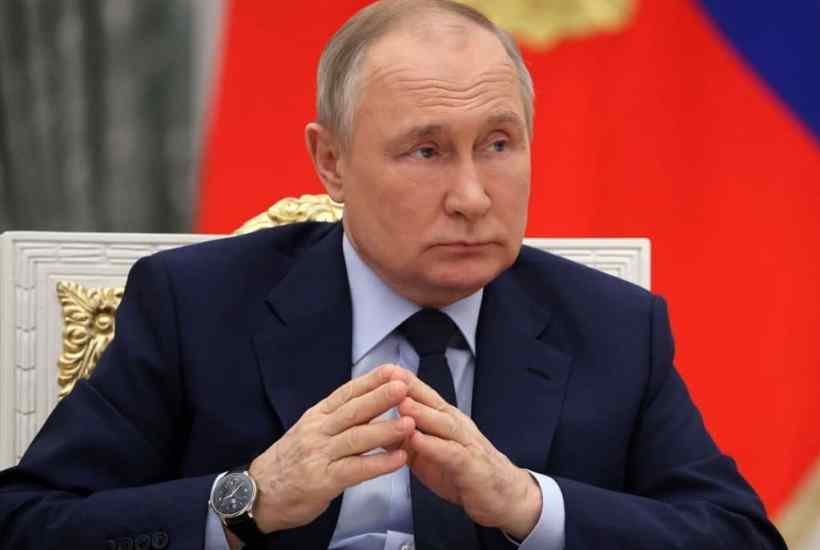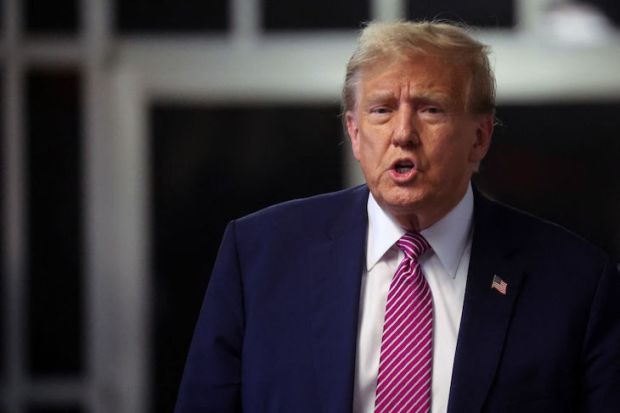In some ways, it’s a headline-writer’s dream: Putin puts his faith in Satan. In reality, it’s actually Putin’s new RS-28 Sarmat (‘Sarmatian’) heavy intercontinental ballistic missile, which has become colloquially known in western circles as the ‘Satan II’. It is intended as a replacement for the R-36M, which in Nato parlance is known as the SS-18 ‘Satan.’
Following a successful test on Wednesday Putin asserted that the missile would not only ‘reliably ensure Russia’s security from external threats’ but that it would ‘provide food for thought for those who, in the heat of frenzied aggressive rhetoric, try to threaten our country.’
It is certainly true that it is a powerful, next generation weapon. It has an estimated range of 18,000km (11,000 miles), travels fast enough to hit London in 13 minutes (depending on where it is fired from), and can carry up to 15 separate warheads, a mix of nuclear bombs, Avangard hypersonic glide bombs and decoys.
The missile has been in development since 2009, but whatever it means for Russia’s military arsenal, it certainly has an important place in Putin’s rhetorical one. Back in 2018, to spice up an otherwise dull state-of-the-nation address, he unveiled six ‘magic weapons,’ from a nuclear-powered cruise missile to an air defence laser. Some of these are of questionable value or are still essentially untried, but the Sarmat was already at a late stage of development, and was a safer bet – and Putin accompanied his announcement with a computer animation of one launching a strike on then-President Donald Trump’s Mar-a-Lago resort in Florida.
The Sarmat is hard to target with anti-missile defences, and while its development is a natural element of the overhaul of Russia’s missiles – the original RS-36 dates back to the 1960s –in part it was also spurred by Moscow’s overblown fears about US anti-ballistic missile defences. Admittedly, in practice we are a long way from the kind of systems which could defend against more than a rogue missile or two.
For all its new capacities, though, when the Sarmat begins to be deployed, reportedly at the end of this year, it will not really change much. The capacity to blow up the world a little bit more effectively, a little bit more quickly, matters to theoretical deterrence studies more to than to the rest of world.
The point is, though, that Putin is trying to mobilise his nuclear forces not for conventional nuke-against-nuke deterrence, but for political purposes. The Kremlin is increasingly turning to hints and oblique threats involving Russia’s nuclear weapons to try and intimidate the West.
Right after his invasion of Ukraine, Putin ordered his defence minister to bring the nuclear forces to a ‘special regime of combat duty,’ something that sounded menacing even if in practice it had no real meaning. Since then, former president and now deputy chair of the Security Council Dmitri Medvedev has warned that if Sweden and Finland join Nato, ‘there can be no more talk of any nuclear–free status for the Baltic.’
In practice, it is worth noting that Moscow provided Washington with full advance notice, observing its obligations under the New Start arms treaty. However, the new Putin we have seen this year appears less predictable and more of a risk-taker than in the past. If Sarmat and the rest of Russia’s strategic arsenal is likely to have a role, it will be in trying to deter the West from any major response if – and it is still very much an if – Putin breaks all the rules and uses a tactical nuclear weapon in Ukraine.
The odds are still very much against any such action, not least because Beijing would be deeply unhappy about any breach of the nuclear taboo, but with ‘new Putin,’ one can never say never with absolute confidence.
The only small reassurance is that even in the Russian government there are those who also seem increasingly alarmed by the degree to which the ‘old man’ seems to be becoming dangerously erratic. If he did decide to go nuclear, there is a chance that this might galvanise them into taking action, rightly seeing their Motherland as being put equally at risk.
Got something to add? Join the discussion and comment below.
Get 10 issues for just $10
Subscribe to The Spectator Australia today for the next 10 magazine issues, plus full online access, for just $10.




















Comments
Don't miss out
Join the conversation with other Spectator Australia readers. Subscribe to leave a comment.
SUBSCRIBEAlready a subscriber? Log in